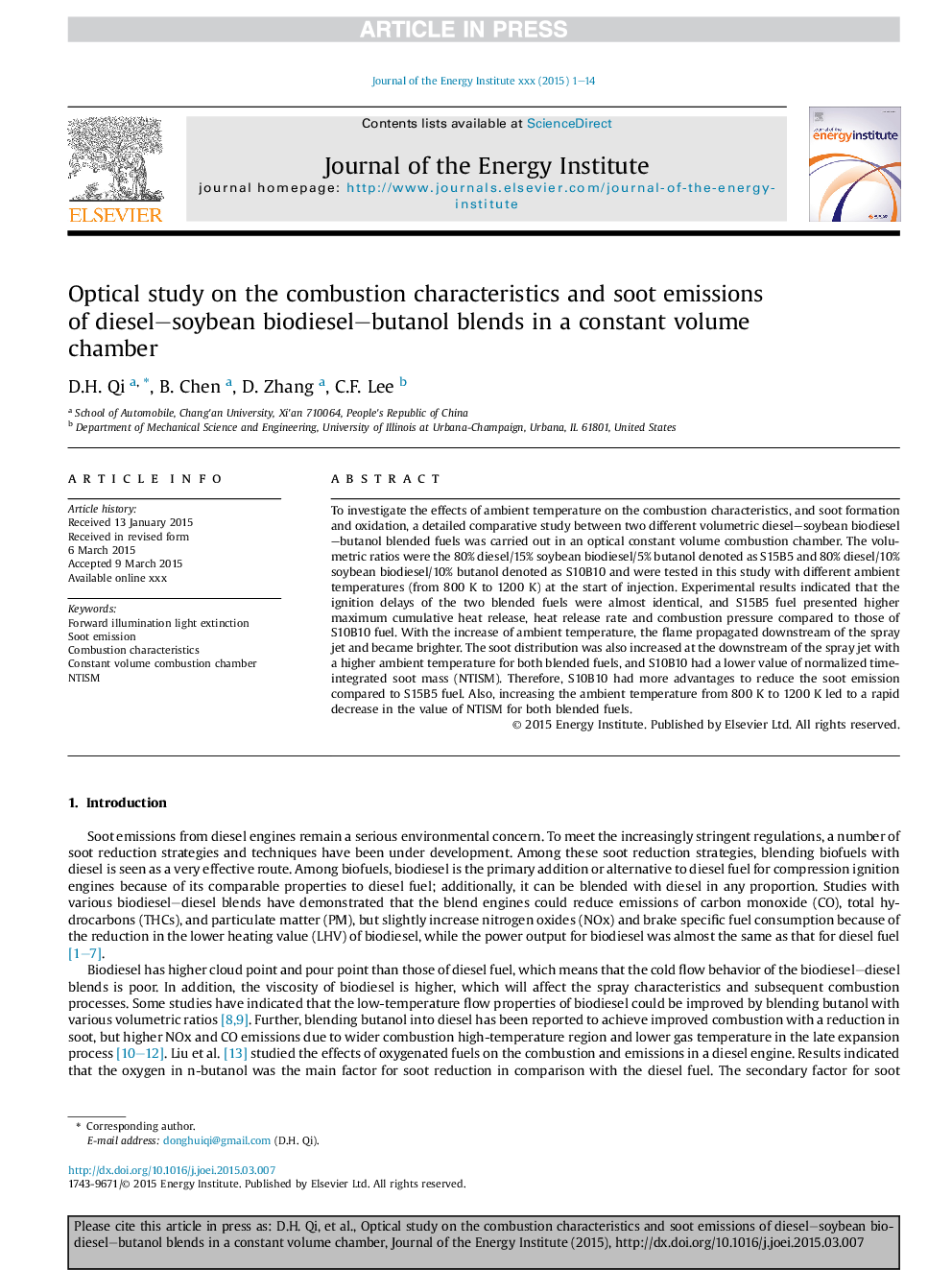| Article ID | Journal | Published Year | Pages | File Type |
|---|---|---|---|---|
| 8109430 | Journal of the Energy Institute | 2016 | 14 Pages |
Abstract
To investigate the effects of ambient temperature on the combustion characteristics, and soot formation and oxidation, a detailed comparative study between two different volumetric diesel-soybean biodiesel-butanol blended fuels was carried out in an optical constant volume combustion chamber. The volumetric ratios were the 80% diesel/15% soybean biodiesel/5% butanol denoted as S15B5 and 80% diesel/10% soybean biodiesel/10% butanol denoted as S10B10 and were tested in this study with different ambient temperatures (from 800Â K to 1200Â K) at the start of injection. Experimental results indicated that the ignition delays of the two blended fuels were almost identical, and S15B5 fuel presented higher maximum cumulative heat release, heat release rate and combustion pressure compared to those of S10B10 fuel. With the increase of ambient temperature, the flame propagated downstream of the spray jet and became brighter. The soot distribution was also increased at the downstream of the spray jet with a higher ambient temperature for both blended fuels, and S10B10 had a lower value of normalized time-integrated soot mass (NTISM). Therefore, S10B10 had more advantages to reduce the soot emission compared to S15B5 fuel. Also, increasing the ambient temperature from 800Â K to 1200Â K led to a rapid decrease in the value of NTISM for both blended fuels.
Related Topics
Physical Sciences and Engineering
Energy
Energy Engineering and Power Technology
Authors
D.H. Qi, B. Chen, D. Zhang, C.F. Lee,
